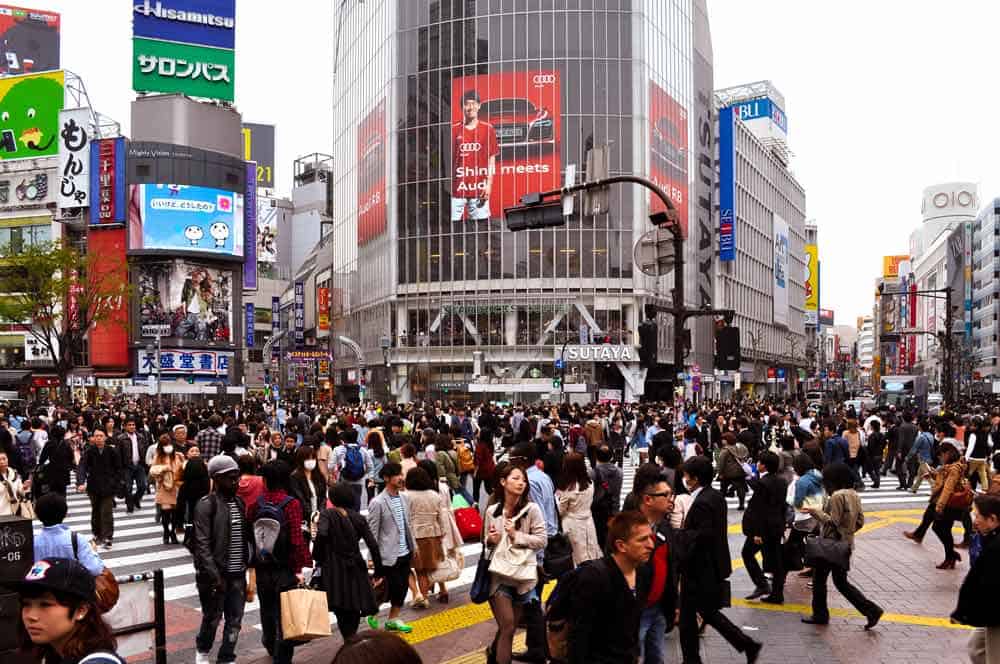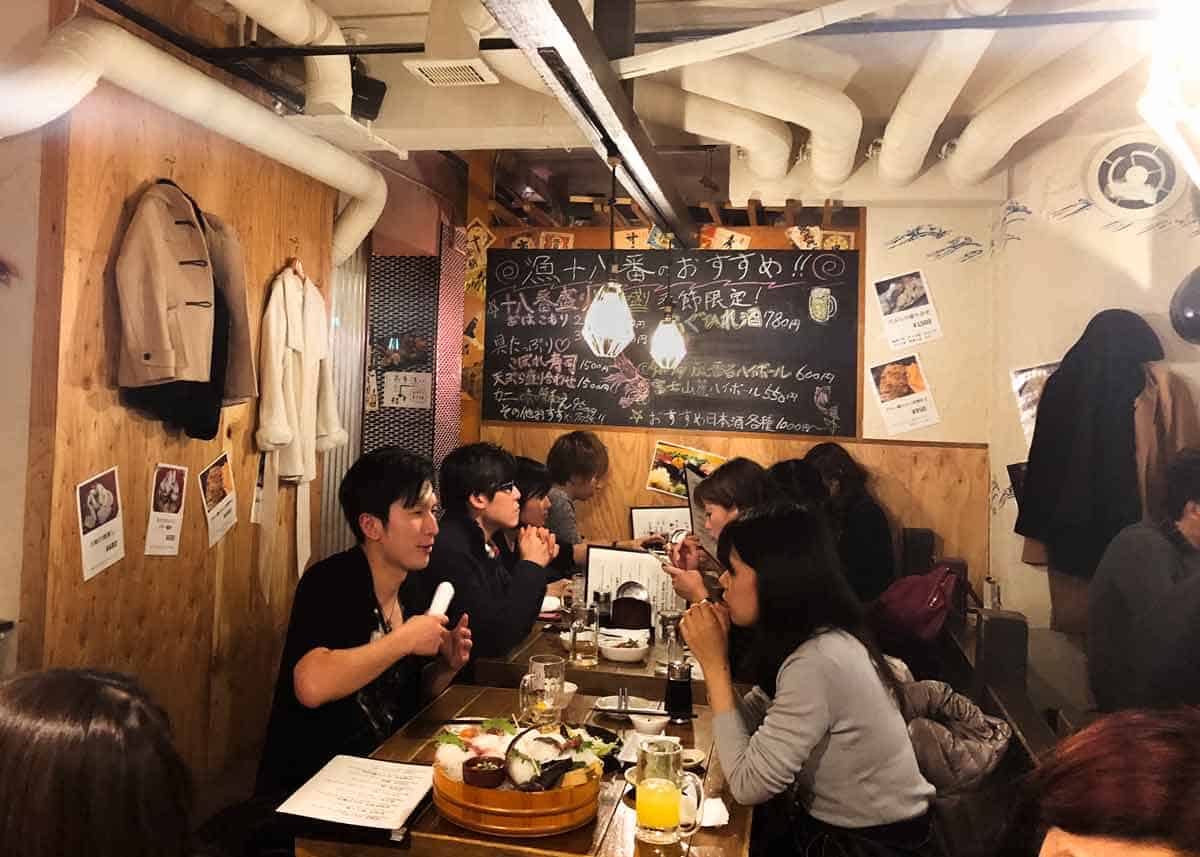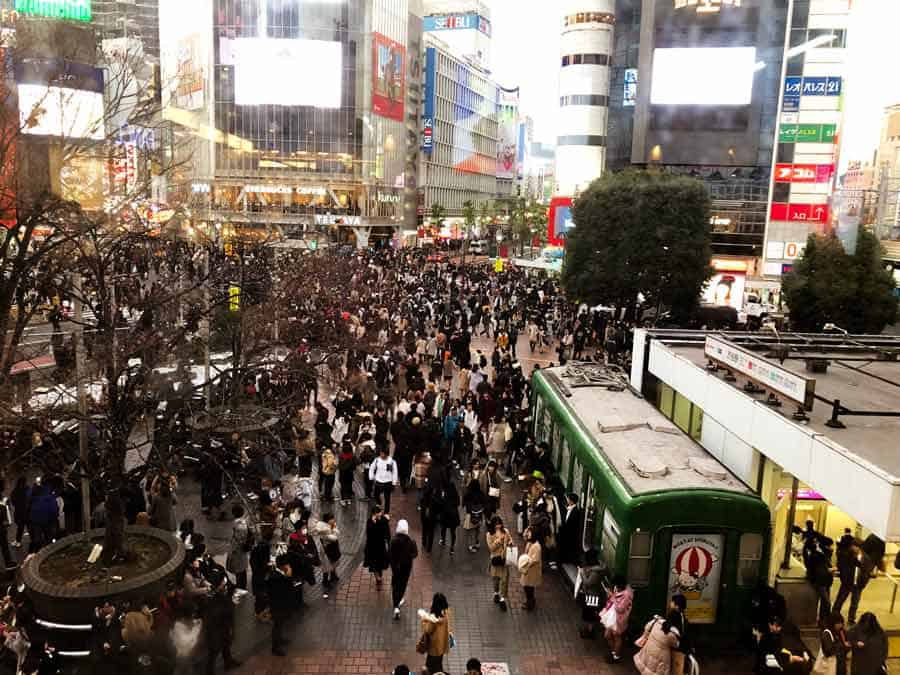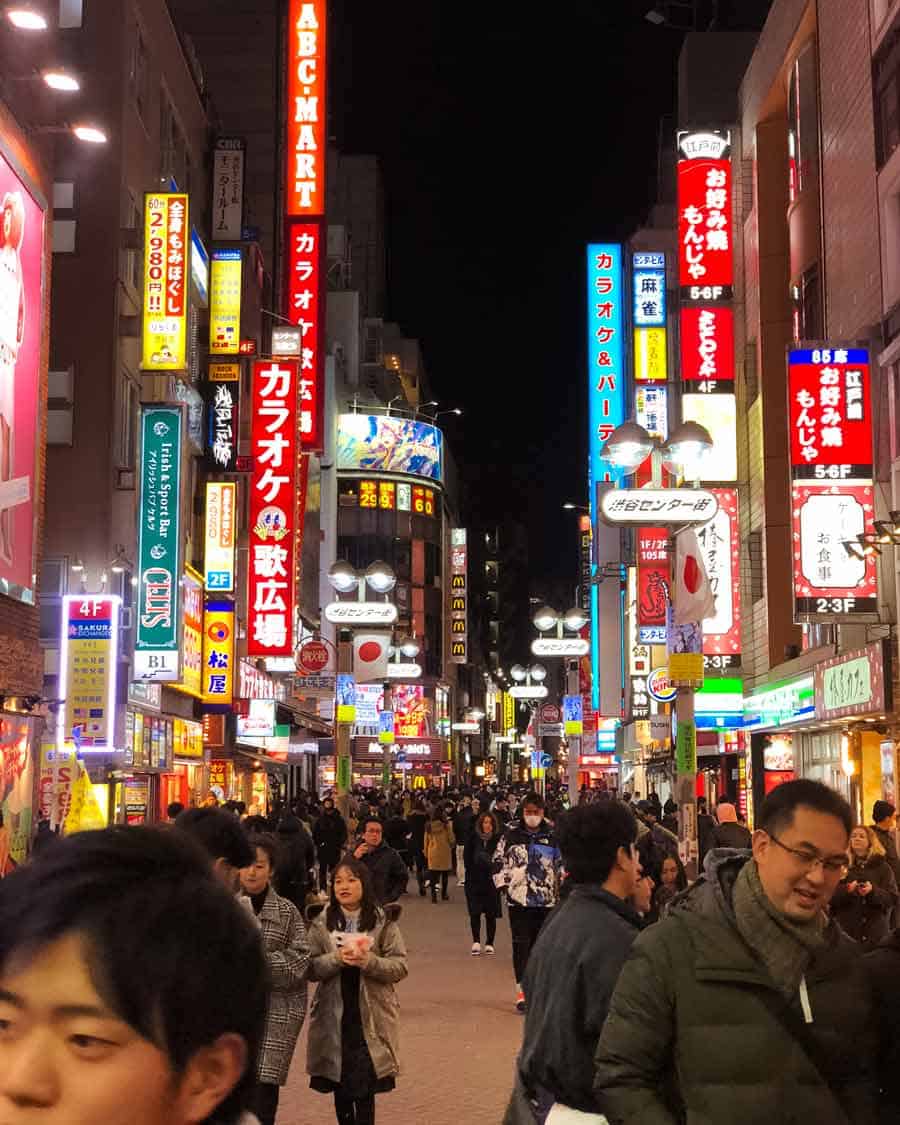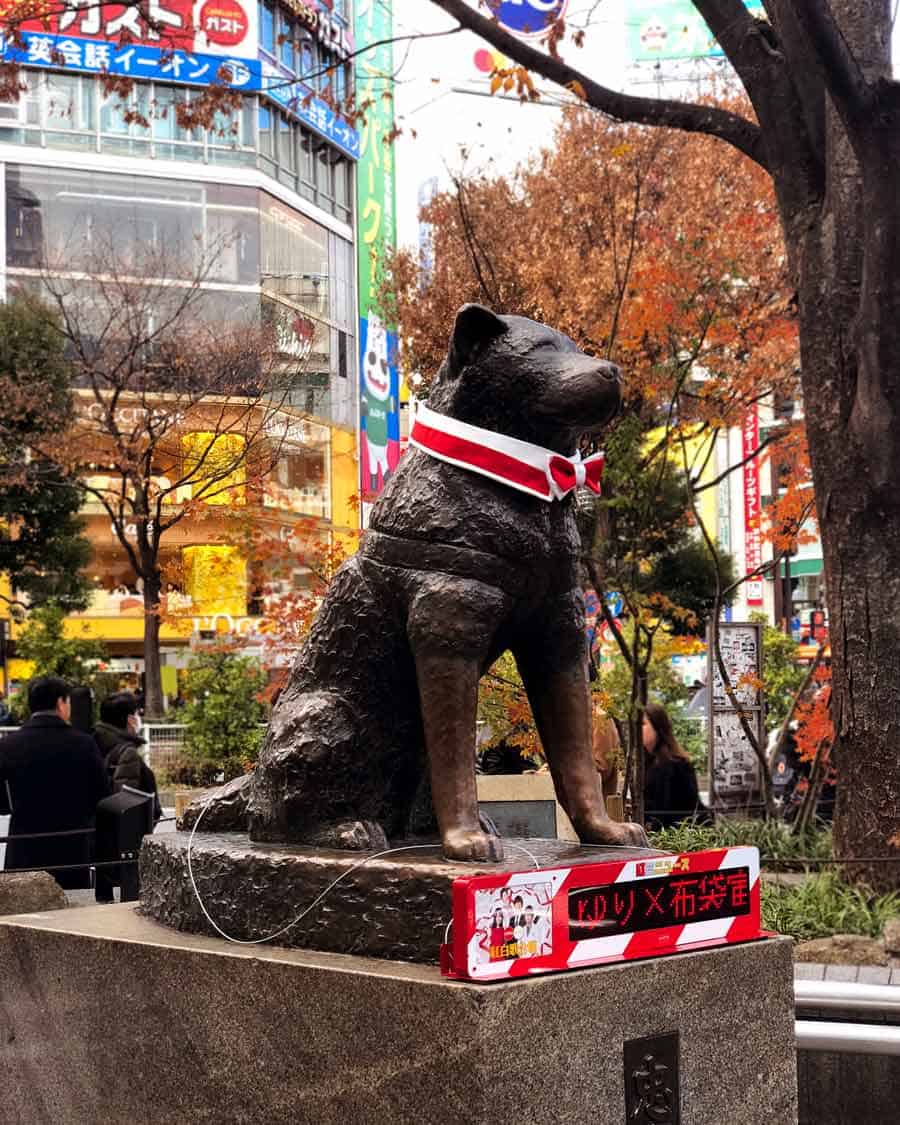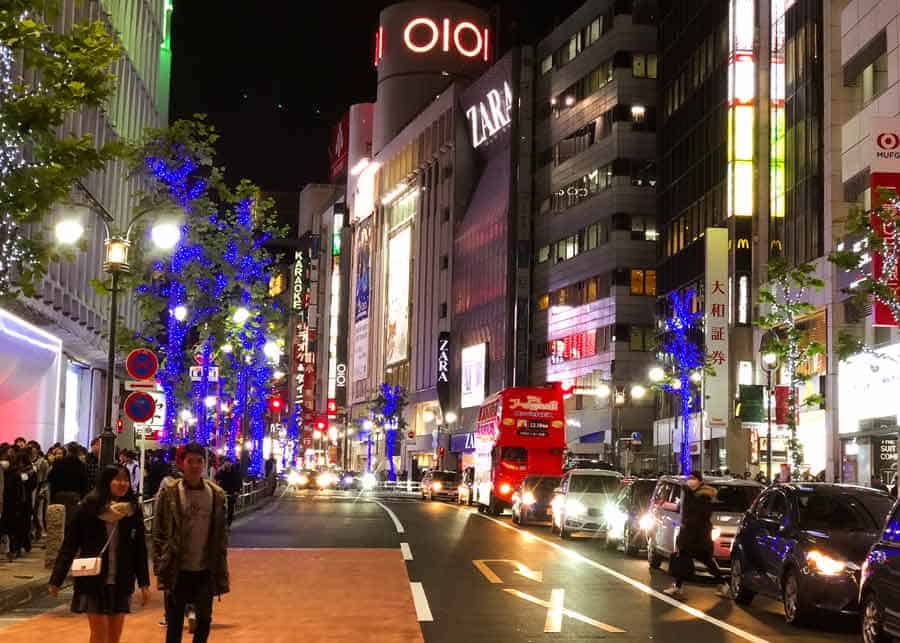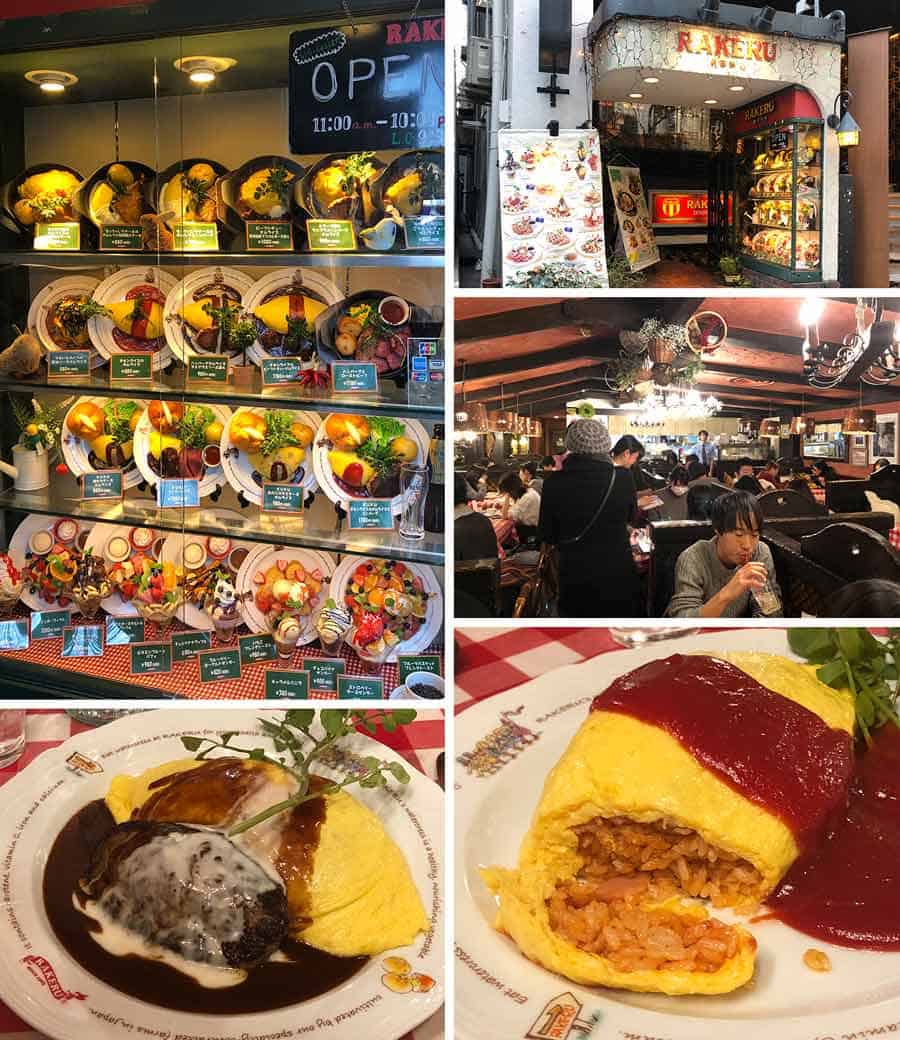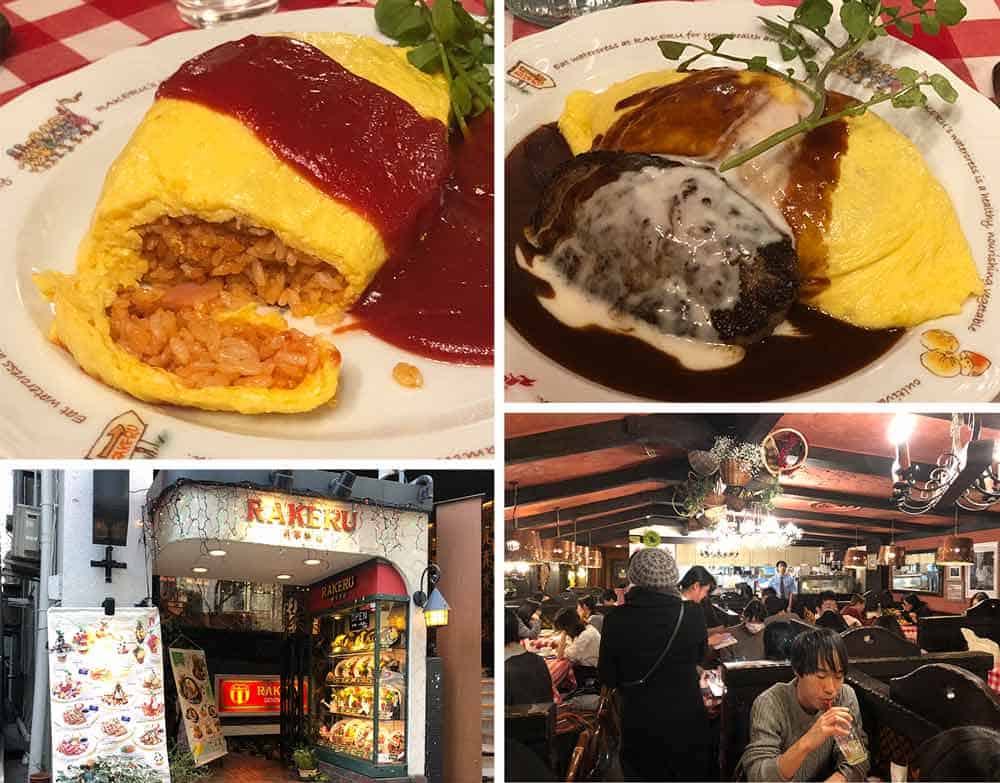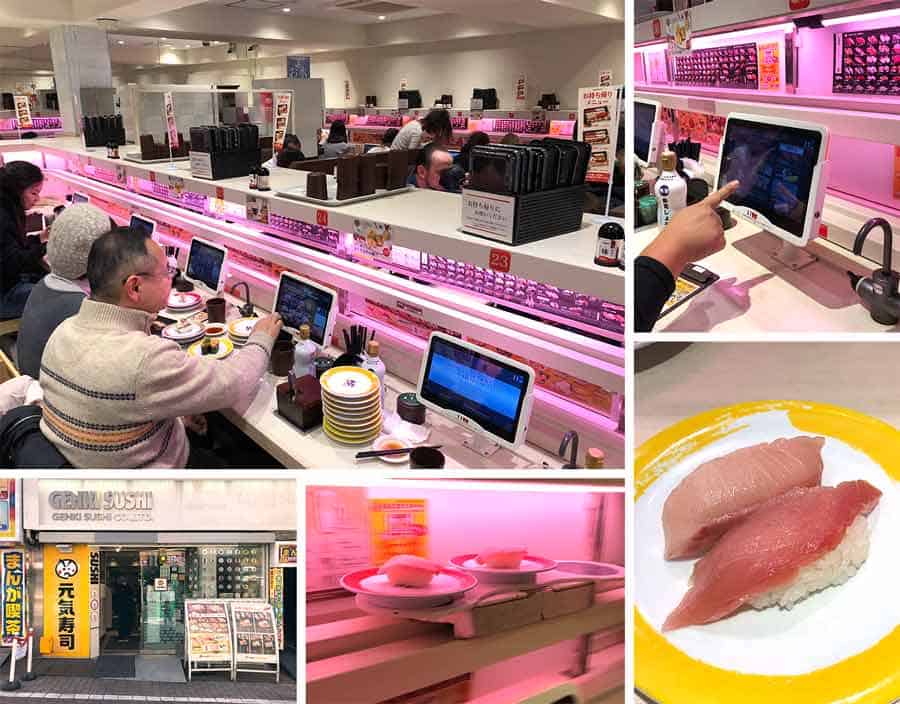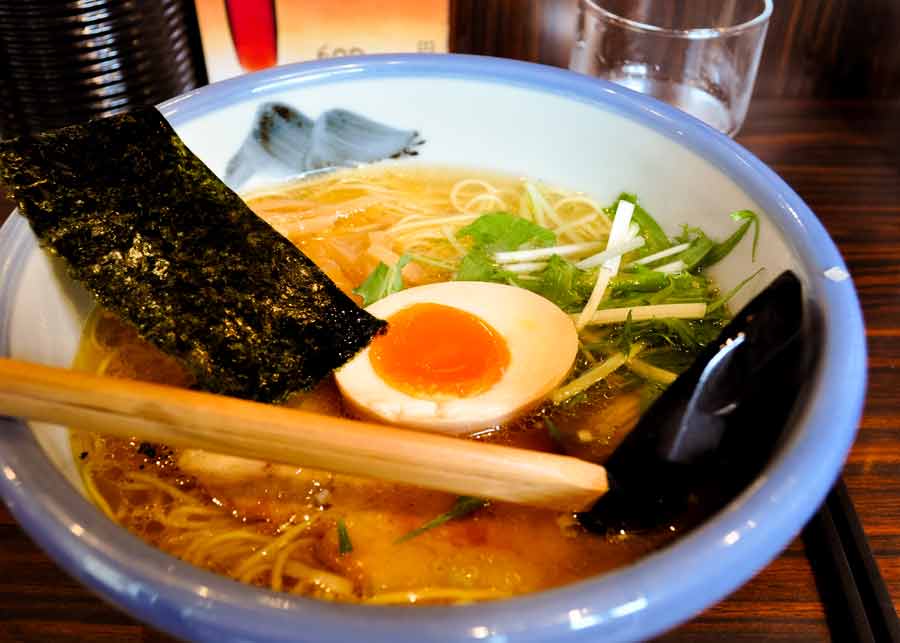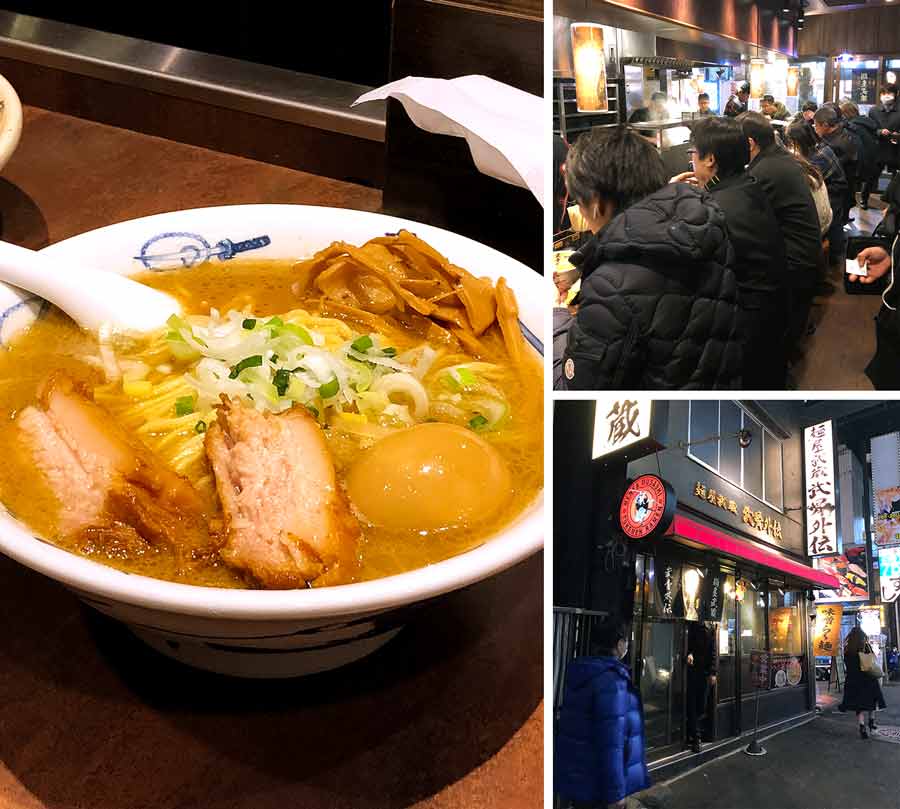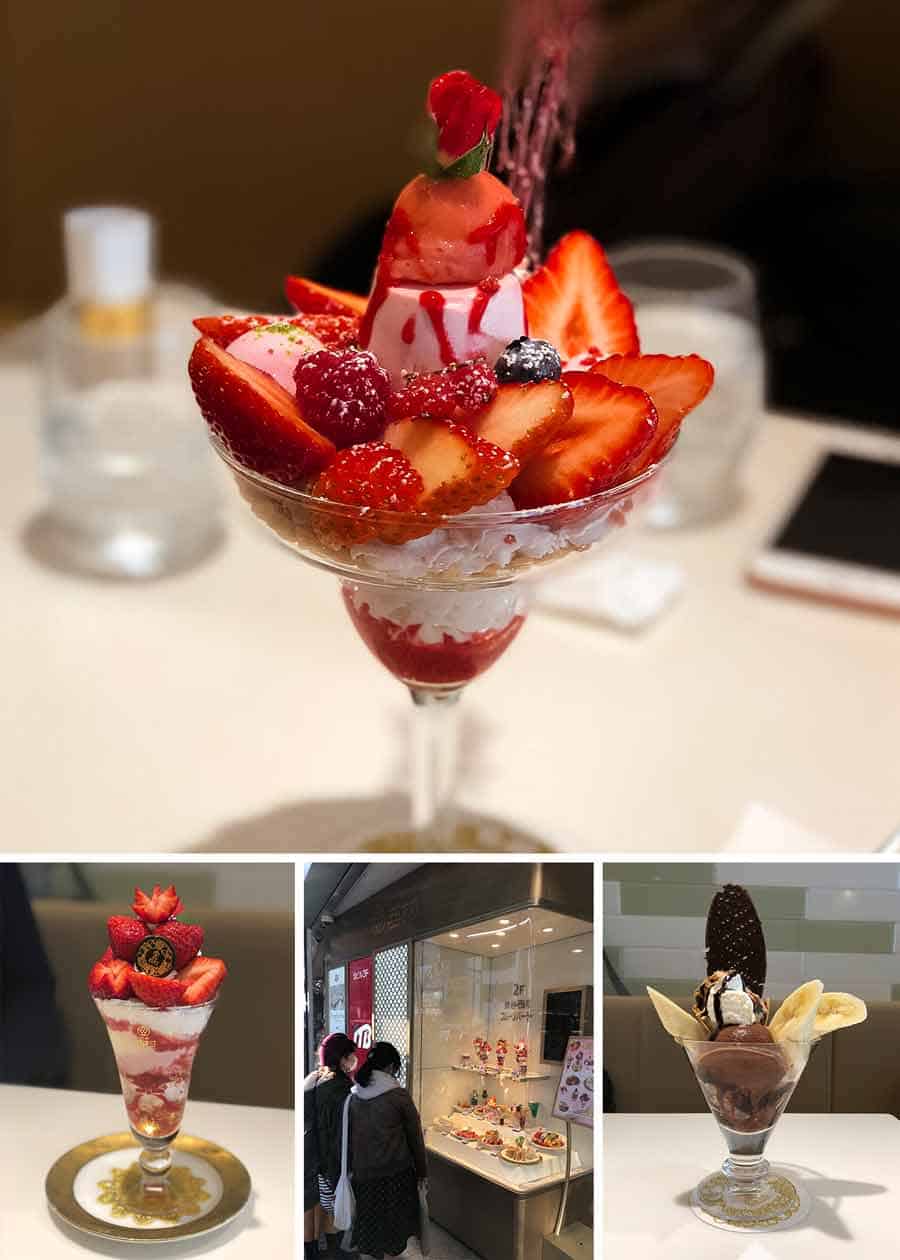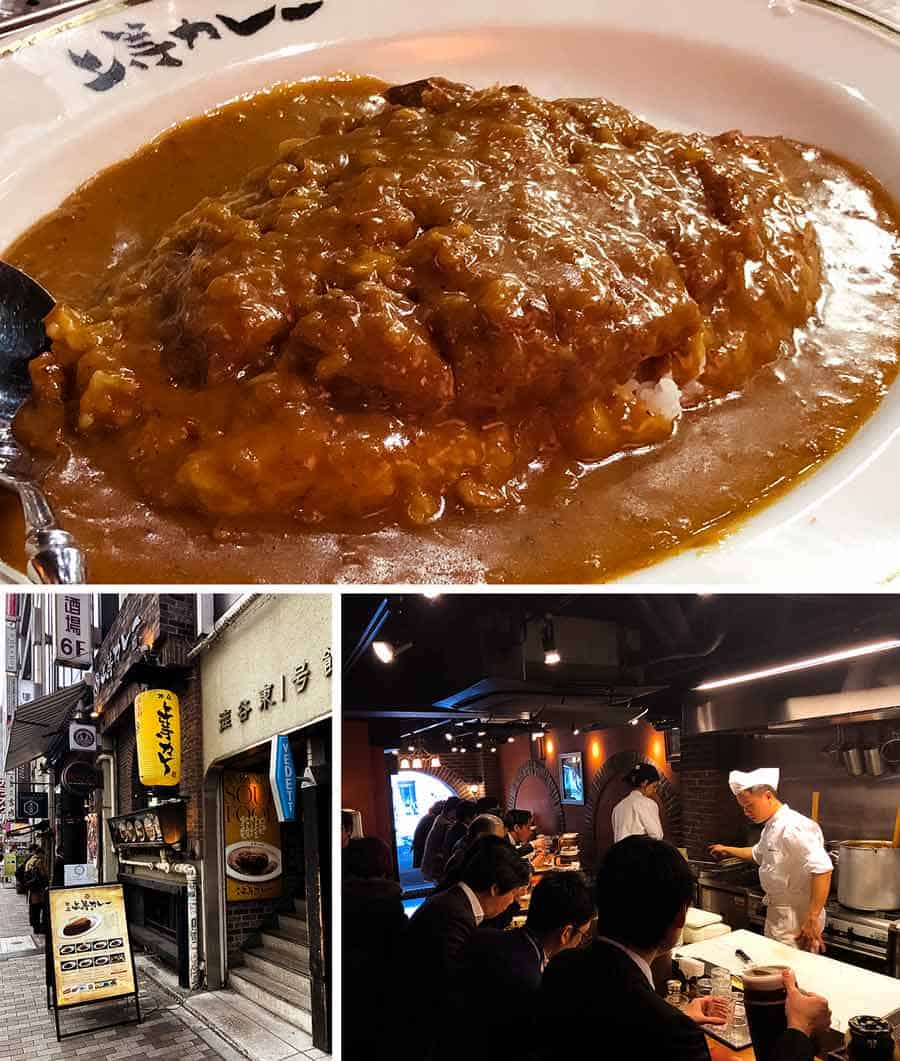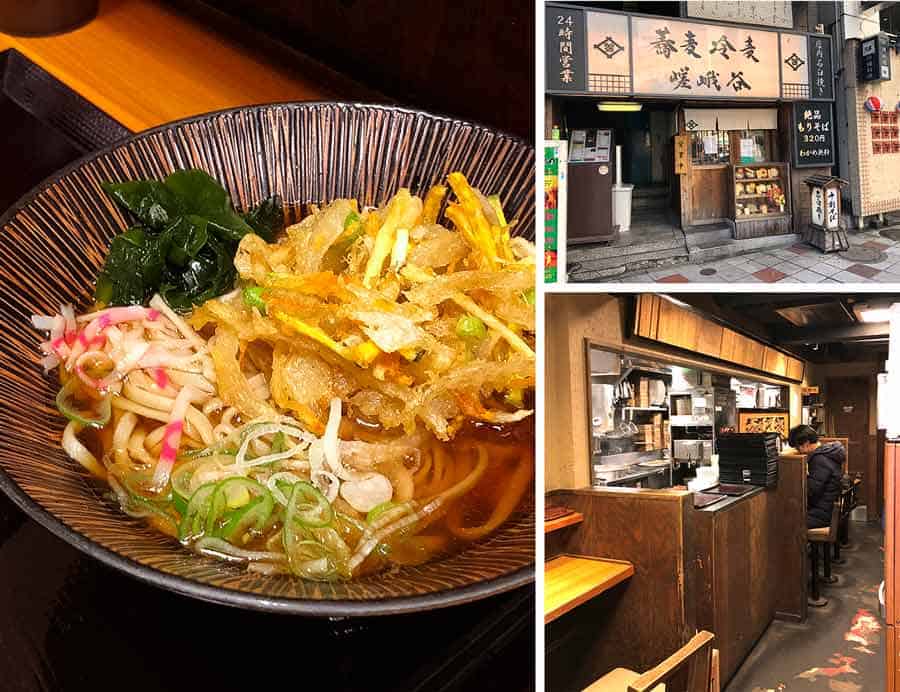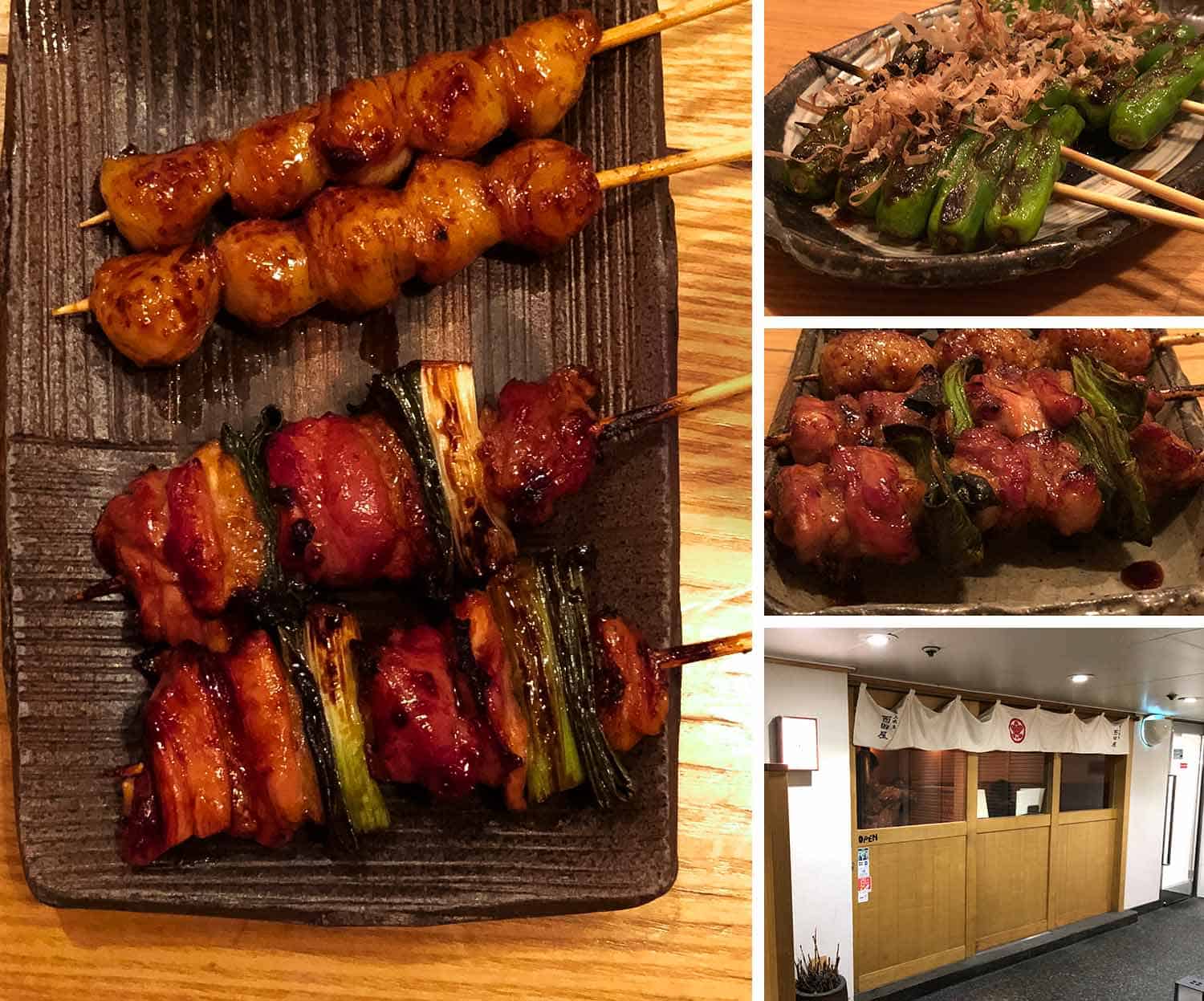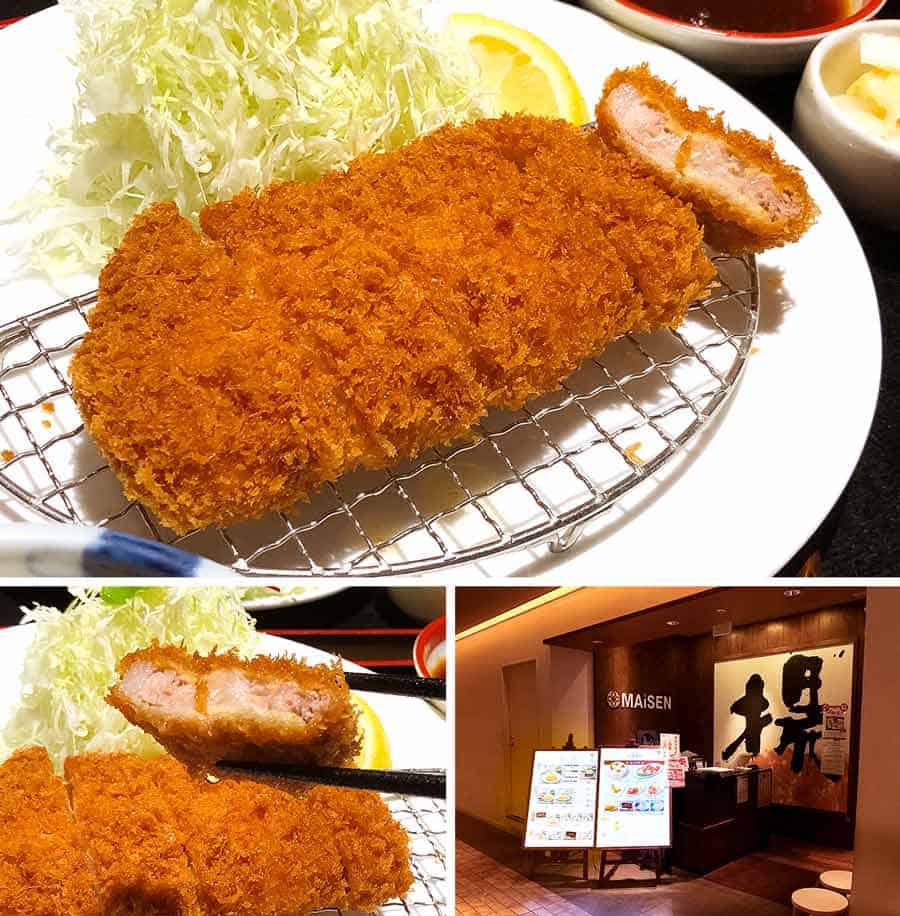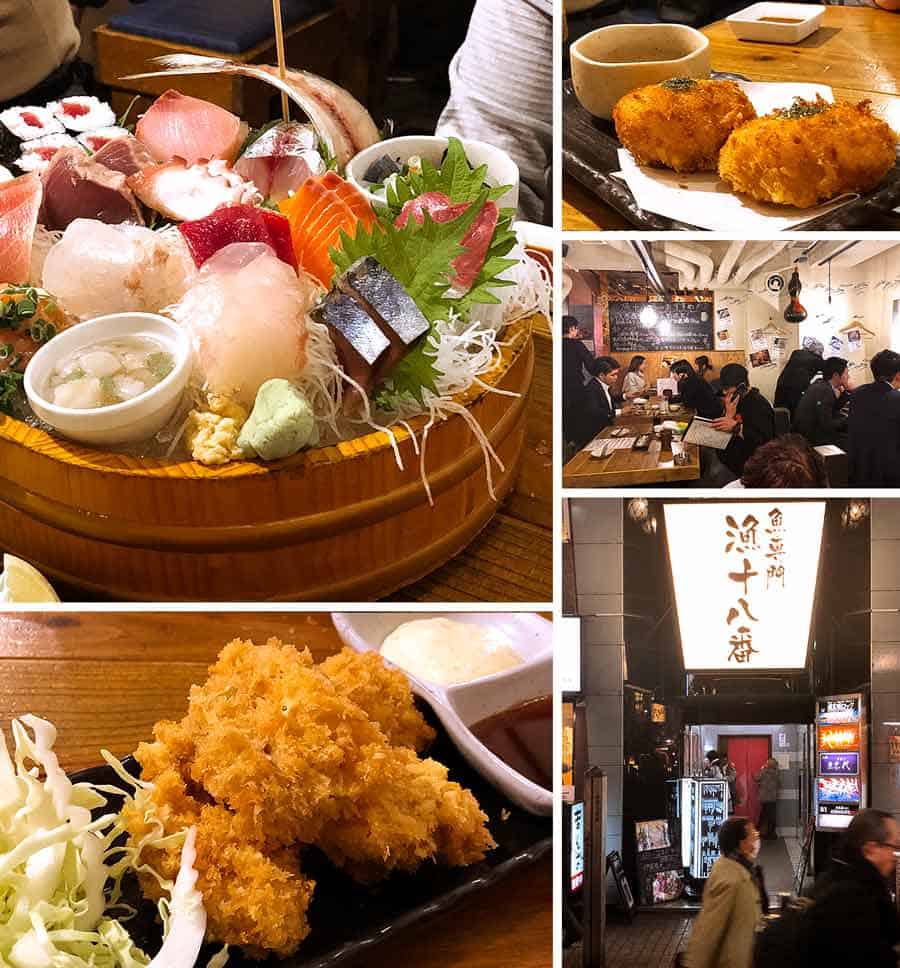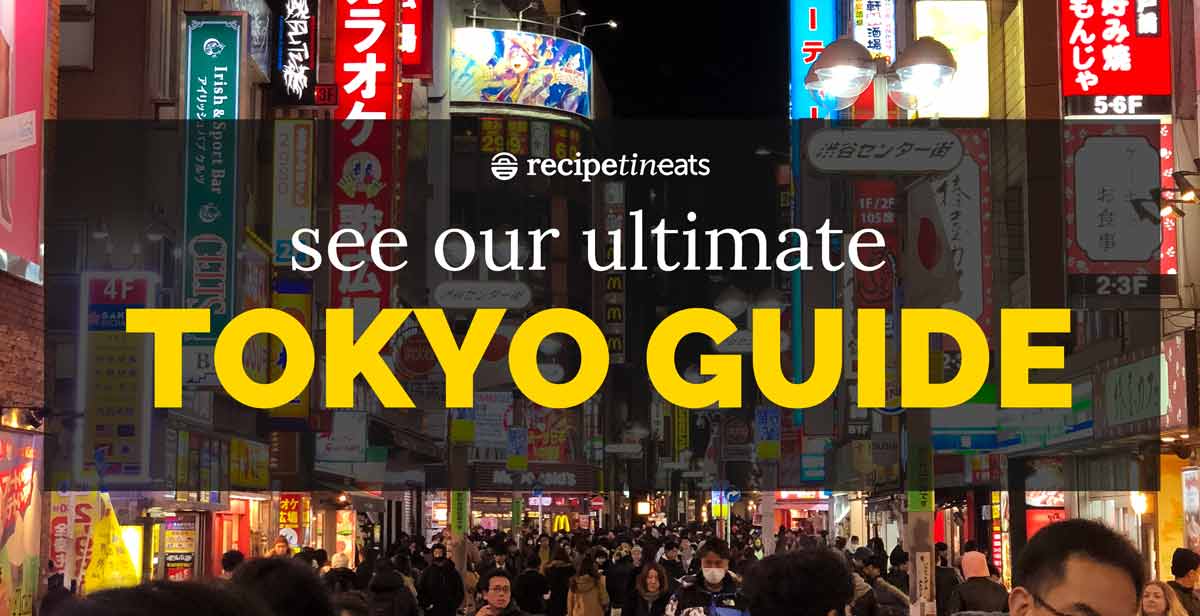Shibuya is famous for being the playground for the young and hip in Tokyo, but caters to people from all walks of life when it comes to entertainment! It has it all: Great night life, trendy places to dine, as well as seemingly endless shopping options. Shibuya is a great place to stay if you want to experience the Tokyo night life. And we have loads of recommendations for places to eat here – it’s one of our favourite areas!
Shibuya
Shibuya is a busy shopping and entertainment precinct that attracts a younger crowd but also has its mature side. While Harajuku is home to Tokyo’s alternative youth culture, Shibuya is fairly mainstream by comparison. You might see the occasional girls wandering around in outrageous kawaii Little Bo Beep outfits and dudes in anime cosplay (“costume play”) get-ups, but not like you do in Harajuku! Shibuya is a great location to base yourself for your visit to Tokyo particularly if you want to immerse yourself in Tokyo nightlife. Step outside your hotel and you’ll have endless options for places to eat and drink in every direction, and a buzzing vibe that comes alive at night through to the late hours!
Is Shibuya safe at night?
Much like the rest of Japan, Shibuya is safe at night and there’s no areas to avoid. Behave yourself, observe local laws and you’ll be absolutely fine – Japan is one of the safest countries in the world to travel!
What to do in Shibuya
Shibuya crossing
For visitors to Shibuya, one of the main tick boxes is to witness the famous Shibuya crossing (above). With each light change hundreds of people calmly cross the intersection at once in multiple directions like a large, carefully choreographed flashmob. The best places to watch the crossing are from Shibuya station or from the second floor of the Starbucks opposite the crossing. The best time to go to the Shibuya Crossing is after 5pm, Monday to Friday. This is when it is at its busiest, and night time is an especially mesmerising time to watch the black-haired human swarm against the backdrop of glaring billboards and neon signs.
Center Gai
Crossing the Shibuya intersection, you will find yourself naturally following the crowds into Center Gai (センター街), which literally means “center street”. This narrow street is full of fast food outlets, cheap fashion outlets, clubs and bars, and is the beating heart of Shibuya for the youth demographic. While older visitors may find things of limited interest, it’s worth rubbernecking and if you happen to be hungry there are plenty of good eating options in this part of Shibuya.
Hachiko statue (famous Shibuya dog statue)
Getting off the subway at Shibuya station you will see signs for the “Hachiko” station exit. Outside this exit is a statue first built in the 1930s in honour of a dog named Hachiko. Shinjuku is larger and has more of everything (food, bars, night spots, shopping) and also caters to the wealthier with a number of high end stores. Shibuya is like a smaller version of Shinjuku and caters more to the younger, “trendier” crowd so it has a slightly different vibe. Both are great! If you are trying to decide which to stay in and you are a first time visitor to Tokyo, I would recommend Shibuya because Shinjuku can be a bit daunting if you aren’t a confident traveller! The story goes as follows: Hachiko is remembered for his loyalty to his master, a professor whom he would greet at Shibuya station at the end of each day upon the professor’s return from work. His master died suddenly one day, never to arrive at the station again. For the next nine years however, Hachiko faithfully returned to the station at the same time each day to wait in vain for his master, until eventually Hachiko himself also passed away. 😢 The poignant story of Hachiko is well-known in Japanese culture, and the statue commemorates both Hachiko and the values of traditional family loyalty he represents. The statue and exit have also become a well-known meeting point for people.
Walk, eat and drink!
Shibuya is less about specific points of interest and more about ambling up and down streets, soaking up the energy of the area and immersing yourself in everything it has to offer. Mid afternoon is a good time to visit. Have a stroll and maybe a bit of shop, then watch the area truly start to come alive as the sun sets. Neon signs and fairy-lit trees sparkle, and the crowds swell as Shibuya finds another gear. Now’s a good time to settle in somewhere with your family or mates for a tasty dinner with a few drinks, wind down and enjoy just being here in one of Tokyo’s best-loved nightlife districts.
Best food and restaurants in Shibuya
Like most major hubs in Tokyo, pretty much any kind of food you can think of can be found in Shibuya. Below are some of our tastiest, most interesting and best finds!
YOSHOKU
In Japanese cuisine, yoshoku refers to Japanese-style Western food. That is, Western dishes that have been adapted over time to suit Japanese tastes by introducing Japanese ingredients and preparing the dish in particular way to create a uniquely Japanese versions of popular European dishes. For first timers hearing about this, don’t discount this as a weird Japanese thing! Yoshoku is a common class of food in Japan and it’s so good, we decided to begin our Shibuya food list with yoshoku!
Rakeru is a yoshoku restaurant that has been around since the 1960s, with its kitschy interior and waitresses in cutesy maid uniforms that are apparently supposed to channel an Alice In Wonderland theme. This establishment is famous for the yoshoku classic omurice (or Japanese shorthand for “omelettes on rice”). Here, immaculate omelettes are served over flavoured rice, with a sauce of some kind and additional toppings (even a hamburger patty) if desired. Other yoshoku dishes like roast chicken, roast beef, soup and the like are also available. The quality of the food here is extraordinary. I still remember the taste of the jus (sauce) on those omelettes in the photo below. The flavour was so complex and rich, it would be right at home at a high end, Michelin star restaurant! There’s also a range of generous desserts to finish – just in case a you’re feeling it’s a five-digit calorie kinda day. Rakeru Address: B1F 1 Chome-12-9 Shibuya, Shibuya-ku, Tokyo (Map). Also at Ikebukro, Shinjuku, etc. Phone: +81 3 3407 9221 Open: 11:00-22:00 daily Website (Japanese only)|Tabelog page
SUSHI
If you’re looking for a sushi fix at cheap prices with a very Japanese technological twist, look no further than Genki Sushi, just off Center Gai. Using a touch screen menu (English available) you can order plates of sushi which are freshly made in a kitchen hidden from view. Once ready, they are sent out to customers via a futuristic delivery system. Plates are whizzed directly from the kitchen to the customer on an automated railing system snaking around the restaurant. Novelty-value aside, there is a wide selection of sushi and the quality is very good for the price. We tried it for the first time on our last trip and we’re impressed with the whole package! There is one other branch in Tokyo, see below for details. Genki Sushi Address: 24-8 Udagawacho, Shibuya-ku, Tokyo. Also at Itabashi-ku, Tokyo (Map). Phone: +81 3 3461 1281 Open: 11:00-23:00 daily Website|Tabelog page
RAMEN
When many think of ramen, they think of the rich, pork-heavy tonkotsu broths of Hakata style ramen. Afuri is a highly regarded ramen restaurant chain known for their light, fragrant broths and delicious thin noodles. Their signature dish is yuzu ramen, a ramen with a broth made of chicken, fish and kombu, garnished with yuzu (Japanese citrus fruit). When you order, you will need to specify noodle thickness and how much oil/fat you want in your ramen. If you don’t speak Japanese this might be hard when you’re asked, so just say “futsuu” which means “regular”. If you forget that then just shrug, look around anxiously like a helpless tourist and they’ll probably give you the default style. (The beauty of the ticket system is you’ve already paid so they have to give you something!) We see they have expanded to quite a few restaurants over the years, testament to the popularity of their ramen. Branches can be found in Harajuku, Shinjuku, and many other locations around Tokyo. Afuri Address: 1F Grandeforesta, 3-63-1 Sendagaya, Shibuya-ku, Tokyo (Map). Also at Ebisu, Roppongi, Shinjuku, etc.. Phone: +81 3 6430 1910 (no reservations) Open: 11:00-23:30 daily Website|Tabelog page
Menya Musashi (Shibuya) As far as the ramen scene in Tokyo goes, Menya Musashi is as famous as the legendary samurai (Musashi) after whom the restaurant chain is named after. Known for their rich, meat-and-fish-based broth and the hulking chunks of melt-in-the-mouth chashu pork, Menya Musashi is one of the iconic ramens of the city. The standard Musashi Ramen is the most popular order, with soy and miso flavours offered. Also available is a tsukemen version, where the ramen noodles are served separately, to be dipped in a concentrated version of the broth before slurping them up. (Worth trying, but not our favourite ramen format to be honest.) With 15 outlets across the city, getting yourself to a Menya Musashi is thankfully easier than ever. Still, expect to queue, as this is one of the most perpetually popular ramen chains around. Menya Musashi Address: 2 Chome-8-5 Dogenzaka, Shibuya-ku, Tokyo (Map). Also at Akihabara, Ueno, Ikebukuro, etc. Phone: +81 3 3780 8634 (no reservations) Open: 11:30-22:30 daily (closes 20:00 on first Monday in Feb/April/June/Aug/Oct/Dec) Website|Tabelog page
PARFAIT
Our family have long held an obsession with the Japanese fruit sundaes known as parfait (パフェ). Our mum often recalls to us she ate so much parfait during her Tokyo university days she became worryingly overweight at one point as a result. Her self-control may have improved over the years, but the addiction never waned and if anything was passed on to the children: Getting a parfait hit is a family imperative on every trip to Japan. Good parfait is not easy to find even in Tokyo. So we are thrilled when we find new places to devour one of these luxurious desserts. Nishimura Fruits Parlor has been serving up giant parfaits stacked with amazingly delicious fresh fruit since 1910. We recommend the strawberry parfaits, if not for the chance to savour the astonishing quality of strawberries of Japan (though the layers of perfect cream, ice cream, strawberry mousse and fruit sauces aren’t too shabby either, for sure.) Note that parfaits of this quality and size are not cheap, mostly due to the astronomical price of high quality fruit in Japan. But believe us, it’s worth trying at least once! Also, be prepared to queue. We’d recommend avoiding weekends if possible, when lines are longest. Nishimura Fruits Parlor Address: 2F 22-2 Udagawacho, Shibuya-ku, Tokyo (Map). Also at Machida. Phone: +81 3 6430 1910 (no reservations) Open: Mon-Sat 10:30-23:00 daily (LO 22:30), Sun/PH 10:00-22:30 (LO 22:00) Website (some English)|Tabelog page
CURRY
A queue of salarymen at lunchtime often points the way to a cheap but tasty meal in Tokyo. We joined the line at Joto Curry recently to see what the fuss was all about. One mouthful and we instantly understood why Joto Curry is such a local hit. The spicing and sweetness is perfectly on point, the katsu juicy with a crunchy coating. It also comes with enough rice to feed a sumo, so come hungry. Joto Curry Address: 3 Chome-18-7 Shibuya, Shibuya-ku, Tokyo (Map). Also at Akihabara, Shinjuku, etc. Phone: +81 3 6805 1477 (no reservations) Open: Mon-Fri 11:00-22:00 (LO), SAT/SUN/PH 11:00-21:00 Website|Tabelog page
SOBA
It’s not uncommon to have those head-shaking moments eating out in Japan where you just can’t believe something so tasty and well-made could also be so outlandishly cheap. Sagatani turns out excellent hand-made soba (buckwheat noodles in soup) noodles offered with classic toppings like tempura, grated yam, chikuwa (fish cake) as well as a less traditional but popular curry version. Prices start at a ridiculously low 290 yen and go up to just 490 yen for some of the soup based sobas. And it’s open 24 hours a day. Like, just kill us now? Sagatani Address: 2 Chome-25-7 Dogenzaka, Shibuya-ku, Tokyo (Map). Also at Akihabara, Shinjuku, etc. Phone: +81 3 6416 4248 (no reservations) Open: 24 x 7 (closed on 1st-3rd Jan) Tabelog page
YAKITORI
As far as yakitori goes, Nishidaya inhabits the well-supplied midrange space above your yokocho dives (food alleyway) but below your Michelin-starred artisan yakitori temples. It’s a comfortable local haunt that serves very agreeable yakitori at decent prices. Breast meat is always a good bench test we like to use at any yakitori-ya (yakitori restaurant). It’s the hardest cut to cook without drying out or serving too rare and Nishidaya’s, served with a smear of yuzukosho (yuzu pepper paste), is spot on. Needless to say all other selections also get the thumbs up, with thigh and chicken wings particular highlights. Nishidaya Address: B1F Pola Shibuya Bldg., 1 Chome-15-21 Shibuya, Shibuya-ku, Tokyo (Map). Also at Akihabara, Shinjuku, etc. Phone: +81 3 6433 5445 (no reservations) Open: 15:00-24:00 (LO 23:00) daily Tabelog page
TONKATSU
Maisen has been in business since 1965 and is one of the most famous tonkatsu restaurants in the city. In their own words, their tonkatsu is so tender “you can cut it with a pair of chopsticks”. Every ingredient for the tonkatsu at Maisen is carefully prepared from scratch. The way the pork is cut, the specially crafted breadcrumbs, the oil blend, and the house-made sauce recipes they’ve honed over decades – Every piece plays a part, coming together to form absolute tonkatsu perfection. Maisen’s remains hands down the best we tonkatsu we have ever tried. The Aoyama branch is the original, with a few other locations around the city including two within Shibuya. Maisen Address: 4 Chome-8-5 Jingumae, Shibuya-ku, Tokyo (Map). Also at Shibuya, Tokyo Daimaru department store, etc. Phone: +81 120 428 485 Open: 11:00-22:45 (LO 22:00) daily Website|Tabelog page
IZAKAYA
This cosy seafood-focused izakaya in the heart of Shibuya has a humming vibe and gets packed with locals in the evenings. With helpful staff and an English menu, it’s foreigner-friendly while still remaining authentic. You’ll find all your typical seafood izakaya staples like grilled and fried fish, and decent sashimi platters. A couple of unusual deep-fried croquettes also make an appearance, including uni (sea urchin roe) cream and an outstanding tuna meat number you should absolutely order. Isari Juhachiban Address: 2 Chome-6-12 Dogenzaka, Shibuya-ku, Tokyo (Map). Phone: +81 50 5868 0557 (reservations) Phone: +81 3 6808 5175 (enquiry) Open: Mon-Fri lunch 11:30-14:30 (LO 14:00), Mon-Fri dinner 17:00-23:30 (LO 23:00), SAT/SUN/PH 17:00-23:30 (LO 23:00) Tabelog page
How to get to Shibuya
You can get to Shibuya station on either of the following.
JR Yamanote Line Tokyo Metro Ginza Line Tokyo Metro Hanzomon Line Tokyo Metro Fukutoshin Line
Read the Tokyo Trains section in the Tokyo Travel Guide for information on travelling on trains, and how to figure out which trains to catch where!
Shibuya Area Map
How to use this map
By restaurant name – Click the icon on the top left to reveal our list of recommended restaurants in this area (see above for more information on each restaurant). Then click on the restaurant for more information about that restaurant as well as highlighting the marker on the map. Zoom in and out by clicking the + and – on the bottom left. Large view – Click the icon on the top right to open a new tab to view the map in full screen. Click a marker on the map to reveal more information about the restaurant.
See our Tokyo Guide!
Born in Japan, raised in Australia, Sydney is our hometown, but Tokyo is our playground. This Tokyo Travel Guide is a culmination of a lifetime of travelling to Tokyo, condensed into one place!!
Asakusa / Shinjuku / Shibuya / Harajuku / Tokyo Station / Imperial Palace / Ginza / Ueno / Akihabara
